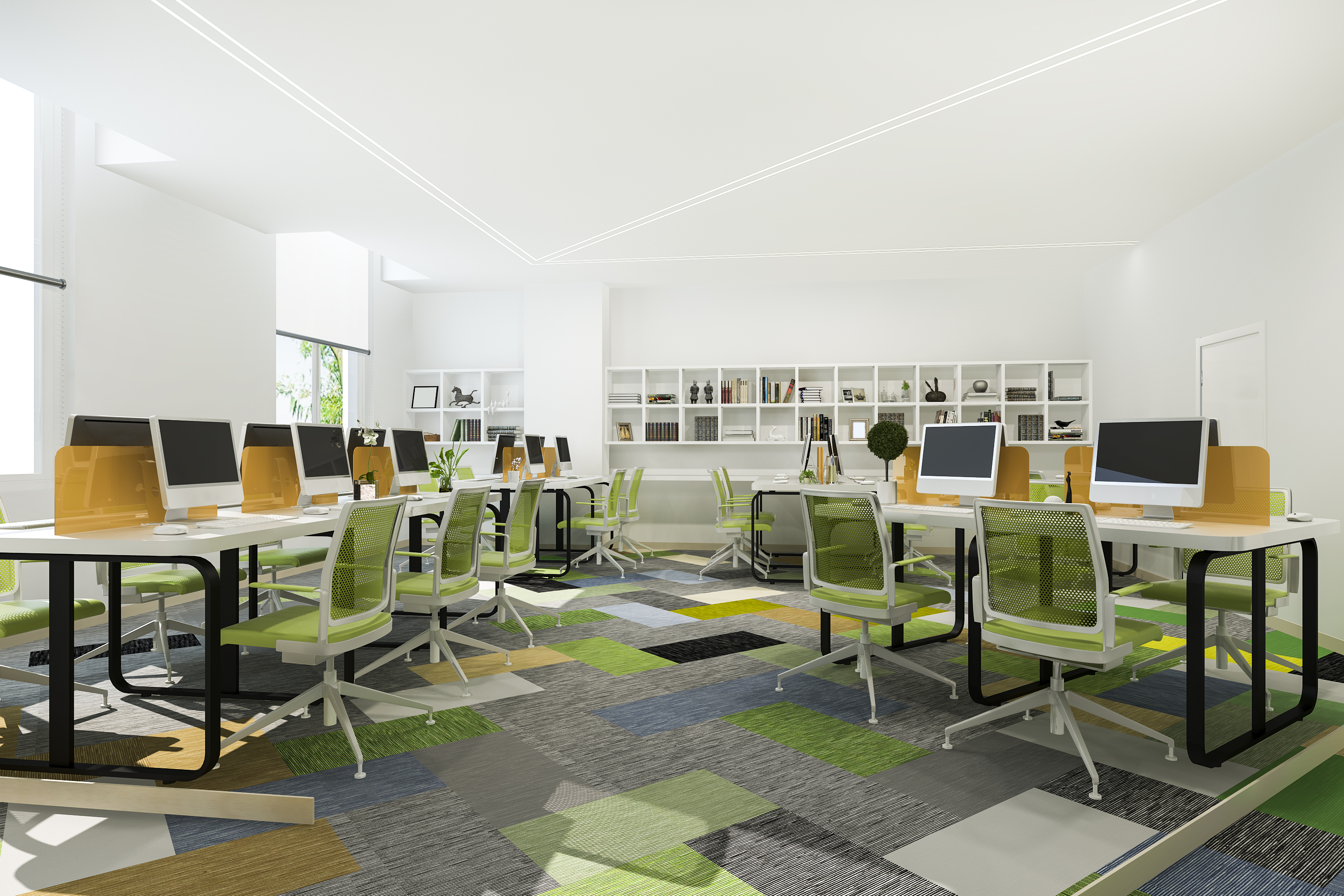
Optimize Your Work Environment With Office Space Analytics
Managing office space is an essential part of any business’s strategy, especially with the rise of flexible working arrangements.
Analyzing office space usage with the help of office space analytics allows businesses to make informed decisions about how to improve efficiency, boost employee productivity, and reduce real estate costs.
Effective space utilization is key to making better use of available resources and ensuring that employees have the right environment to be productive.
In this article, we’ll discuss how you can optimize your work environment using office space analytics to adapt your hybrid workplace for modern office needs.
What Is Office Space Analytics?
Office space analytics refers to the use of workplace data to understand how office spaces are being utilized.
Businesses gather occupancy data through various tools such as desk booking software, sensors, and employee feedback to analyze how much office space is available and how it’s being used.
For example, a company might find that meeting rooms are overbooked, but large sections of desk space remain empty.
With the information they’ve gathered from office space analytics, they can reorganize the office to better fit employee needs.
How Office Space Analytics Works
By tracking presence data, businesses collect information on how often employees use specific areas of the office.
This can include how many people occupy meeting rooms, how many desks are booked, and which spaces remain vacant.
These actionable insights can be used to improve workplace strategy and ensure more efficient use of resources.
- Occupancy tracking: Monitors how often workstations and meeting rooms are used.
- Desk booking data: Tracks desk reservations to understand peak usage times and underutilized areas.
- Vacant space identification: Identifies spaces that remain empty to optimize space usage or adjust seating arrangements.
- Meeting room utilization: Highlights how frequently meeting rooms are booked and whether adjustments are needed for more efficient room scheduling.
The insights gained from space analytics can also reveal trends in employee satisfaction.
For instance, if employee feedback indicates a need for quieter spaces or more open areas for collaboration, companies can respond accordingly by adjusting the office layout.
How to Use Office Space Analytics To Improve Workplace Efficiency
Office space utilization is essential for creating a more productive work environment, especially in the era of flexible working. Here’s how office space analytics can help businesses improve efficiency:
1. Reduce Unused Space
One of the most significant benefits of office space analytics is the ability to identify underutilized areas.
Data-driven decisions can help businesses figure out which office spaces are rarely used and adjust the office layout to eliminate waste.
For example, if large sections of desk space are often empty while collaborative areas are in high demand, companies can redesign their office to optimize space utilization.
This kind of strategic planning ensures that every square foot of the office is being used effectively.
2. Boost Employee Productivity and Teamwork
Space analytics provides insights into how employees use their work environment. By analyzing resource utilization, businesses can create spaces that support both individual work and collaboration.
For instance, if workplace data shows that team members often gather in informal settings for discussions, this might indicate the need for more open spaces for collaboration.
Similarly, if there’s a demand for quiet areas where employees can focus without distraction, the data can guide adjustments to provide these spaces.
The result is improved employee well-being and productivity and a more tailored office environment that meets the needs of everyone in the workplace.
3. Increase Employee Satisfaction and Retention
Satisfied employees are more likely to stay with a company. Space utilization analytics can improve employee satisfaction by ensuring that the office is set up to meet their preferences.
For example, if data shows that employees prefer flexible workstations or meeting rooms with better lighting and privacy, businesses can make adjustments accordingly.
A well-optimized office that reflects employee needs fosters a positive work environment and boosts employee engagement.
4. Make Informed Decisions
Using historical data gathered from office area analytics, companies can make data-driven decisions about how to best use their office space.
If data shows that a large meeting room remains underutilized, for example, the company might choose to convert it into a smaller room or repurpose it into a collaborative area.
This type of effective space management allows businesses to align their office setup with future needs and optimize space usage for improved productivity.
5. Prepare for the Future Workplace
As businesses adapt to new working models like hybrid work, office area analytics provides a flexible way to plan for the future.
Analytics can help identify trends, such as increased demand for meeting rooms or open spaces, allowing businesses to adapt quickly.
For example, if more employees begin working remotely, the business can reduce the number of desks and repurpose underutilized areas to accommodate more flexible work arrangements.
Cutting Down Real Estate Costs With Office Utilization Analytics
By identifying underutilized areas, workspace analytics helps businesses lower real estate costs without sacrificing productivity.
Here’s how businesses can cut real estate expenses using workplace analytics:
Discover Opportunities for Downsizing
Many businesses lease more office space than they need. Workplace analytics pinpoints which areas are consistently underused, such as vacant workstations or idle meeting rooms.
With this information, companies can decide whether to downsize their current office, sublease unused space, or move to a smaller location, thereby cutting down on unnecessary real estate costs.
Optimize Space for Current Needs
Workforce dynamics are constantly shifting, especially with the rise of flexible working and hybrid models.
Office utilization analytics allows businesses to quickly adjust to these changes by showing real-time space utilization patterns.
If data reveals that fewer employees are working on-site, companies can downsize or sublease unused space, reducing overhead costs.
This approach ensures that office space is used efficiently based on current workforce needs.
Lower Overhead Costs
When fewer employees occupy certain areas of the office, costs associated with utilities, cleaning, and maintenance can be reduced.
Workplace analytics provides the insights necessary to make these adjustments, helping businesses cut overhead costs across their real estate portfolio.
Types of Office Space Analytics Tools
Workspace analytics tools come in various forms, each designed to gather and analyze data about space utilization, occupancy, and employee behavior.
Here are some of the most commonly used tools:
1. Occupancy Sensors
Occupancy sensors are devices that track the presence of employees in specific areas of the office.
These sensors detect motion, heat, or sound to provide real-time data on how many people are using different spaces, such as desks, meeting rooms, or common areas.
This data helps identify underutilized spaces or overcrowded areas that need adjustment, ensuring that every square footage of the office is optimized for effective use.
2. Desk Booking Software
Desk booking software allows employees to reserve desks, meeting rooms, or other office resources in advance.
These systems offer valuable insights into how often certain spaces are used, which times are most popular, and how many seats are occupied during peak times.
3. Workplace Management Platforms
Comprehensive workplace management platforms go beyond just occupancy and desk booking.
These platforms allow companies to manage multiple aspects of the office environment, including room reservations, space usage, visitor management, and employee experience.
By integrating various data points, they provide a holistic view of how the office is performing, leading to more informed decisions and cost savings through optimized resource allocation and space utilization.
4. Meeting Room Reservation Systems
Meeting room reservation systems make it easy for employees to book rooms in advance.
These systems often come with additional features, like audiovisual equipment booking, catering requests, and room setup customization.
How DeskFlex Uses Office Space Analytics to Optimize Your Work Environment
Optimizing your work environment is easy when you have the right tools at your disposal. With DeskFlex, you gain access to smart desk-booking solutions that work for both traditional offices and hybrid setups.
Our software gives you in-depth insights into office space analytics to track the status of your workstations and allocate them wisely.
1. Reservation Data Reporting
DeskFlex’s reservation data reporting collects office space utilization analytics. This shows how desks, rooms, and equipment are used by the company. Managers can review detailed reports on resource usage to see which spaces are popular.
These insights improve employee engagement by aligning office layouts with worker preferences. The system highlights peak booking periods, helping businesses adjust resources to match real needs.
2. Workspace Optimization With Real-Time Data
Real-time occupancy data from DeskFlex gives businesses a live view of how their workspace is being used. Managers can spot inefficiencies and make quick adjustments to maximize space usage.
This is especially useful for offices with changing workforce demands to prevent wasted space while improving daily productivity.
3. Resource Booking Analytics
DeskFlex’s resource booking analytics track usage patterns for meeting rooms and equipment. The software gathers utilization data, helping managers determine which spaces and resources need better allocation.
Insights into booking frequency and capacity prevent overbooking or idle spaces, which streamlines office resource management and boosts productivity.
4. Desk Booking Insights for Hybrid Work Environments
Hybrid work environments require flexibility, and DeskFlex delivers detailed insights into desk booking patterns. It tracks who is booking desks and how often, improving employee engagement by ensuring desks are available when needed.
Companies can adjust desk layouts based on actual booking trends, preventing overcrowding while using available space wisely.
5. Customizable Reporting and Data Visualization
DeskFlex offers customizable reports that present space utilization analytics in easy-to-understand visuals. Businesses can quickly interpret space utilization metrics to identify patterns and make informed adjustments.
These reports are flexible, letting companies view specific data that helps them optimize space and resources for maximum efficiency.
Manage Your Hybrid Workspace More Efficiently With Deskflex
With DeskFlex’s workplace management software, managing your hybrid office space is easier than ever. Whether you need to reserve meeting rooms, desks, or shared workspaces, DeskFlex allows you to make, modify, or cancel bookings in just a few clicks.
Stay organized and efficient while cutting down on unused office space, and gain control over your office layout with 3D floor maps and real-time availability.
Book a demo today and start simplifying your workspace management today.
FAQs About Office Space Analytics
What is office space analytics?
Office space analytics involves using data to track how office space is used. It helps companies identify patterns, optimize layouts, and improve efficiency.
How can office space analytics benefit my company?
It reveals underused areas, helping you repurpose or downsize space. This approach reduces costs while creating a better working environment.
What types of data are used in office space analytics?
It typically gathers data from occupancy sensors, booking systems, and employee feedback. This information provides a clear view of how rooms and workspaces are used.

















































